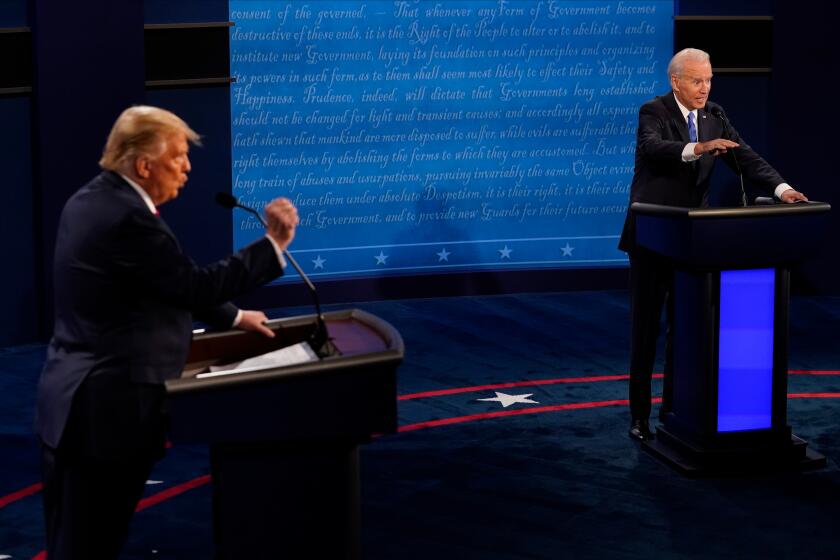The affirmative action debate
Responding to The Times’ Aug. 16 editorial “Affirming affirmative action,” reader E.G. Rice wrote:
“The 14th Amendment requires each state to provide equal protection under the law to all citizens. The 1964 Civil Rights Act outlawed most forms of discrimination. Affirmative action subjects applicants to different standards based on their race or gender, which makes it unconstitutional.
“In the 2003 ruling that upheld affirmative action, Justice Sandra Day O’Connor suggested that the policy should end within 25 years. What other sound, constructive government policies can you think of that should end in 25 years? And how should we compensate the male, white and Asian Americans who have been robbed of opportunity by this un-American policy?”
Editorial writer Michael McGough responds:
Whether one believes affirmative action violates the 14th Amendment’s equal protection clause depends on whether one believes that the clause is “color-blind” — that is, whether it makes no distinction between laws designed to improve the condition of freed slaves and their descendants and those that penalize that population. The color-blind approach was reaffirmed by Justice Lewis Powell in his opinion in the 1978 Bakke case. It also has been embraced by Chief Justice John G. Roberts Jr.
But another approach to the question — ironically, one based on “original intent,” usually an interpretive theory preferred by conservatives — focuses on Congress’ purpose in approving the 14th Amendment. In a provocative friend-of-the-court brief in a Texas affirmative action case pending before the court, the Constitutional Accountability Center points out: “Far from establishing a constitutional ban on the use of race by the government, the Framers of the 14th Amendment rejected proposals to prohibit all racial classifications by the government. Indeed, the Reconstruction Congress enacted a long list of race-conscious legislation to ensure equality of opportunity to all persons regardless of race.”
As to whether affirmative action violates the Civil Rights Act, Justice John Paul Stevens took that position in the Bakke case. But Powell’s controlling opinion concluded that “Title VI must be held to proscribe only those racial classifications that would violate the Equal Protection Clause or the 5th Amendment.” Powell concluded that while a program of racial quotas would violate the Constitution (and thus Title VI), a state university could consider race as one factor in seeking to assemble a diverse student body. That is current law, reaffirmed by the court in 2003 in a case involving the University of Michigan Law School.
The Times’ editorial suggested that while a diverse educational experience is a legitimate rationale for affirmative action, an even more persuasive reason is to address the “underrepresentation of African Americans in the ranks of the highest-achieving college applicants,” which the editorial said was “ inseparable from this country’s legacy of racial discrimination.” The reader calls affirmative action an “un-American” practice that robs “male, white and Asian Americans” of their opportunity to win places at competitive universities. That argument assumes what it attempts to prove: that any preferences in admission for minority candidates, even those whose grades or test scores may reflect inequalities traceable to a legacy of racial discrimination, are not only illegal but also unfair. That is a respectable position, but not (to us) a persuasive one.
More to Read
A cure for the common opinion
Get thought-provoking perspectives with our weekly newsletter.
You may occasionally receive promotional content from the Los Angeles Times.






